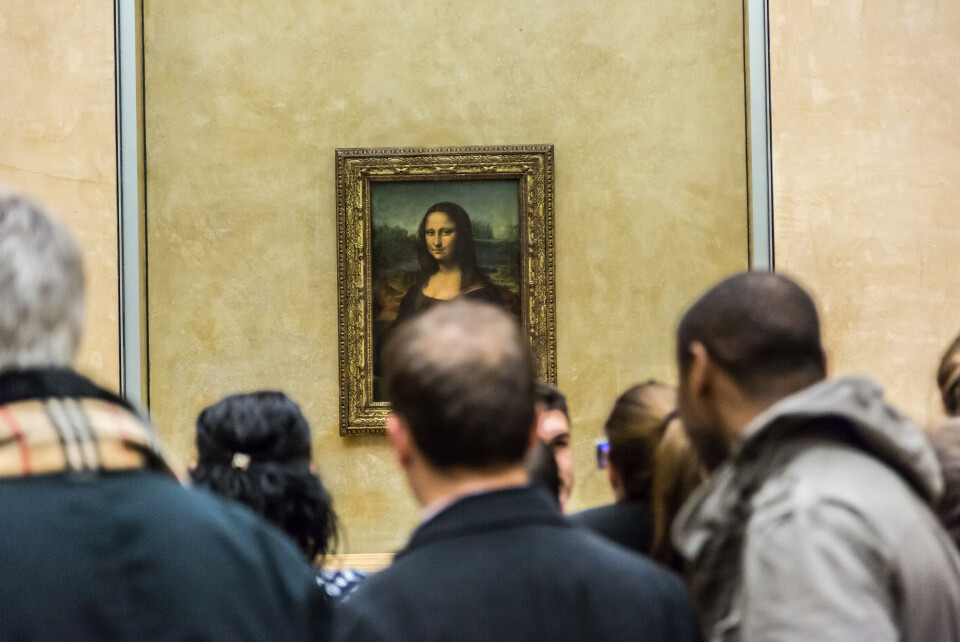-
The magic of mayonnaise: Why a homemade emulsion always woos guests in France
Plus, which shop-bought mayo brand is best?
-
Letters: Beware the financial cost of losing a spouse in France
Connexion reader faced unexpected expenses and legal hurdles after their partner's death, which added stress to an already difficult time
-
Letters: France's language requirements for residency are simply unrealistic
Reader says it takes a minimum of three years study to prepare for France's DALF C2 diploma
‘Paris proves people will happily pay for great art’
Columnist Nabila Ramdani believes other countries could learn a thing or two from the success of the French capital’s museums

One of the stranger sights of many during France’s ongoing industrial strife was long queues of art-lovers defying picket lines at the Louvre in Paris.
Even when the museum was closed because of strike action, people waited patiently for its doors to reopen to pay as much as €17 for a basic adult ticket.
Such extraordinary dedication helps ensure the Louvre remains the most popular art museum in the world, by far.
Read more: Art: France’s long history of copying Old Masters at the Louvre
Read more: Louvre sister museum in old French mining city celebrates 10 years
7.7 million visited the Louvre last year
An incredible 7.7 million visited it last year – at least 2.5 million more than its nearest rival, the Vatican in Rome.
A survey by the Art Newspaper also shows its numbers are well ahead of the British Museum and Tate Modern in London.
The reasons are many and varied, but an obvious one is that Paris has attractions including Leonardo da Vinci’s Mona Lisa – undoubtedly the most famous painting in the world – and the Venus de Milo, the breathtaking ancient Greek marble sculpture probably created by Alexandros of Antioch in around 100BC.
I’ve met numerous Paris tourists who say they head to the Louvre only for the enigmatic smile of La Joconde, as the Mona Lisa is known in France.
‘Don’t care how much it costs’
They don’t care how long it takes, or how much it costs, but they want their own photo of it, despite always expressing incredulity at how small the portrait is (just 77cm x 53cm).
In this sense, Paris has its undisputed art superstar, allowing it to get millions of tourists to subsidise its art, in a way that London – which does not charge for entry into permanent exhibitions – can only dream of.
As we can see in elite sport and a host of other sectors – including quality journalism – people feel comfortable paying for something that is undoubtedly very good and extremely popular and are far less bothered when the cost is zero.
Not only is the Louvre management confident enough to push its prices up, but it regularly limits the number of people who can visit on a particular day.
Afford to turn people away
You know an attraction is doing extremely well when it can afford to turn potential customers away!
To this finite asset financial reason for the Louvre beating all rivals, and especially those just across the English Channel, we must also add the dreaded B word: Brexit.
Since Britain formally left the European Union in January 2020, millions of people living overseas who would normally have arrived in the UK effortlessly and with minimum documentation now need visas.
Duty-free shopping for foreigners has also been scrapped, and this keeps a lot of Chinese and Japanese visitors/tourists – traditionally massive art-lovers – away from Britain.
It is much easier for them to go and enjoy what France has to offer, including multiple luxury stores, along with those from neighbouring EU states, such as Germany, Italy and Spain.
Bounced back since Covid
It all adds up to Paris bouncing back impressively since the Covid pandemic – visitor numbers to the Louvre are down just a fifth on 2019 – while London struggles.
Particularly alarming figures include the National Gallery welcoming just 2.7 million in 2022 – 3.3 million fewer than three years earlier.
The Wellcome Collection, full of images going back to the 14th Century, based in central London and also free to enter, was down a full 55% in terms of visitor numbers over the same period.
Art is eternal and universal, meaning it should be enjoyed by everybody, but there is no doubt that Paris knows how to market it as a prestige attraction, and the tactic is working out admirably.
Related articles
France’s stunning national library is a reader's paradise open to all
Tous à l'Opéra: Free open days at France’s opera houses
Plain sailing? Not for the Paris art museum inspired by a ship
























